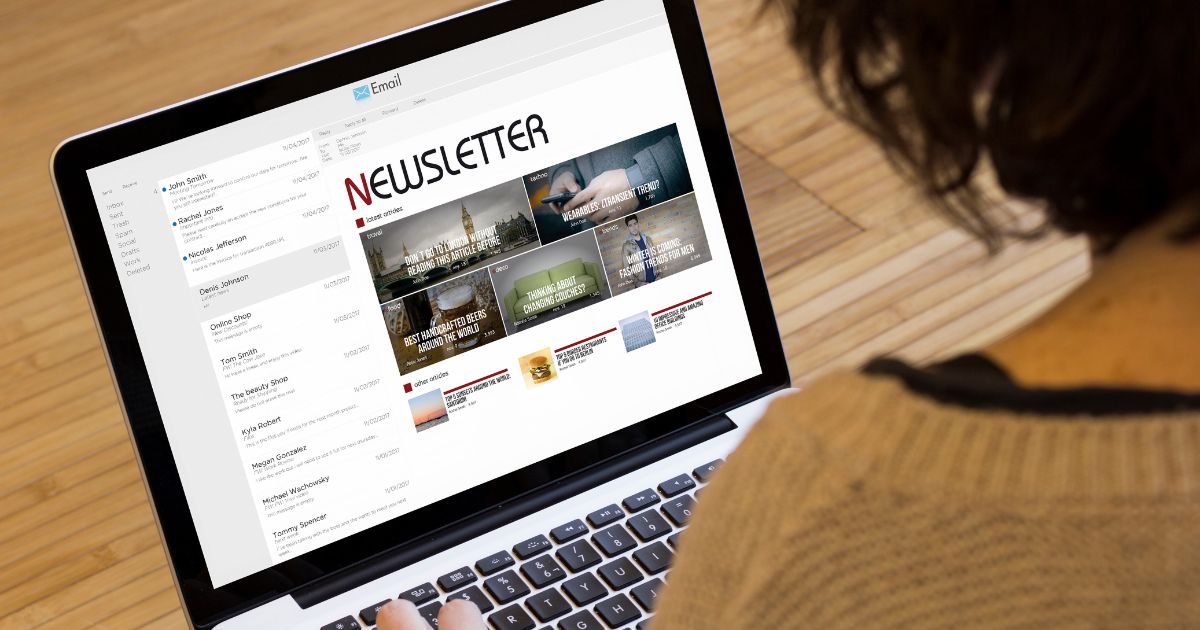Writing a newsletter can be daunting. Not only do you need to know your audience, you also want to choose a newsletter supplier for the fact of accessing important features such as a mailing list manager or to measure the impact of your content including your opening rate. We collected a few tips to get you started with your first effective newsletter. Enjoy!
Identify your audience and draw them in
It is imperative that you identify the audience you are trying to reach. For commercial entities, the newsletter’s audience consists of the customer base. For a non-governmental organisation (NGO) donors, partners or impact investors are targeted, while an association addresses itself to its members. Make sure you know who your audience is, as this will help you spark interest and engagement through your content.
Thanks to your components, your audience engages, feels inspired, learns and remains loyal to the author, your brand. It helps you grow your stakeholder base, no matter if you are a commercial company or an NGO.
Find the right hosting service
There are several hosting services that you can use for your newsletter, each with its own pros and cons capable of complementing your own skills and needs. Most hosting services integrate with other parts of your business or client relationship management tools, making them a versatile addition to your organisation. Many e-mail marketing tools offer free subscriptions for starters with a small number of subscribers or limited emails to be sent. When you upgrade to the premium version, you have more options in design and functions to choose from and the provider’s logo will not be shown. With the GDPR regulations it is important to remember that an e-mail marketing tool not only allows you to manage your existing data flow, it also handles subscribers who unsubscribe. You want to make it easy for them, to stay professional and respect their decision by recording their choice in your system. Nothing is worse than being listed as SPAM. It affects your reputation and your opening rate. We compiled a list of Europe’s main hosting services for you below:
- Mailchimp is one of the most popular newsletter hosting services and it specialises in email campaigns, list management, and transactional emails.
- Sendinblue is a cloud-based marketing communications suite, it provides an upgraded range of tools that can be used for all aspects of digital marketing.
- Mailerlite has a user-friendly interface and digital email marketing service offer automation and landing pages.
- Hubspot – via whom we, LEAD-WiSE, operate – is another major client relationship manager and comprehensive digital marketing tool that is well-established in the sector.
Hosting services show how effective your newsletters are based on open rate for 25%+ and click rate of 2%+ respective to your industry [1]. Where possible, try to direct newsletter readers to your website or social media content through calls to action.
Determine your tone of voice
Now that you know who your audience is and how your newsletter can provide value, the next step is your writing style. While it is standard practice to have the brand guidelines dictate how the newsletter should feel – text fonts, colour schemes – you determine the tone and voice of how you wish to address yourself to your audience. It is a consistent style which reflects your brand.
When reflecting on the tone and voice of LEAD-WiSE, we use conversational speech, which provides clarity and simplicity. We like to play with language to bring joy to our work without taking ourselves too seriously. Showing empathy and wit in our voice engenders engagement, interest and expertise.
At LEAD-WiSE, we are plainspoken. We use a language that avoids inflated speech, which upsells or over-promises. We like to use simple writing, clear and to the point above all. LEAD-WiSE is practical, avoiding distractions like fluffy metaphors.
We are genuine. We get small businesses because we are small too. That means we relate to customers’ challenges and passions and speak to them in a familiar, warm, and accessible way.
We are practical. Through common, logical sense, we demystify B2B-talk and actually coach our audience.
We educate. Our sense of leadership is clear and evident-based, smart but not snobbish. Being innovative and collaborative, we inspire and work together to facilitate practical implementation.
Lastly, at LEAD-WiSE we write in an active voice and avoid slang, jargon and negative language.
Build up your content
Your content should reflect the purpose and services of your business and organisation including news about your team, activities and events your brand is involved in – whichever is the main draw for your audience – and provide opportunities for your readers. Your audience engages with substance when it creates added value. This can be articles, video content, interviews and reviews including research articles with new findings and data, impact and case studies featuring your products or services, insights and highlights about your organisation itself, announcements about events or company news or simply a job offer.
Having some form of exclusive content can help retain your readers, as well as increase the trust levels in your brand. It is key that the narrative of your newsletter meets the values and vision of your brand.
Frequency, weekly or bi-weekly?
There is one rule: Regularity is key. Updates can be posted monthly, while product spotlights and interviews could be every two weeks. You decide on the frequency of your newsletters, as long as the content remains relevant to your audience, with newsworthy, fresh and witty content!
Now, off you go! Starting fresh and for the first time is the hardest. With the experience to come, feedback from clients and a little benchmarking about what the competition does, you will succeed. Should you have questions or wish feedback on your newsletter, contact us. We are happy to share our wisdom.
References
[1] Campaign Monitor, 2023, “What are good open rates, CTRs, & CTORs for email campaigns?”, Marigold.
